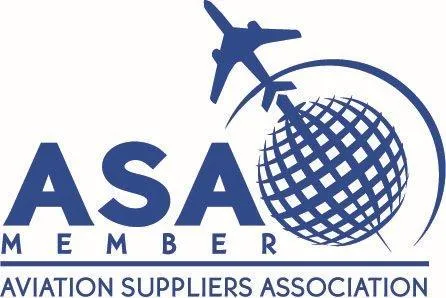
The Latest Innovations in MRO Inspection Technology
Maintenance, Repair, and Overhaul (MRO) inspection plays a critical role in safeguarding aviation safety, reliability, and compliance. Precise MRO inspection records verify that every component meets regulatory and performance standards. The increasing complexity of aircraft has rendered traditional inspection methods slower, less accurate, and inconsistent. Airlines, MRO providers, and lessors are now embracing advanced technologies to strengthen inspection integrity and operational efficiency.
Digital transformation in inspection workflows has shifted from optional to essential within the aviation sector. Innovations such as drones, 3D scanning, AI-powered fault detection, and digital twin modeling are revolutionizing the inspection, maintenance, and certification of aircraft.
Drone-Based MRO Inspection for External Aircraft Checks
Drone-based MRO inspection now enables rapid and precise external inspections of aircraft structures. Equipped with high-resolution imaging and LiDAR capabilities, drones scan fuselage, wings, and tail sections more effectively than traditional inspection methods. Visual surveys that once required scaffolding and manual checks can now be accomplished in a fraction of the time. High-quality drone data enhances both fault detection and the accuracy of MRO inspection records.
Aviation Week revealed that major airlines using drone-based MRO inspection reduced external inspection time by 60%. AI-driven image processing tools quickly identify anomalies such as dents, surface cracks, or lightning-strike damage with superior consistency. Operational costs decrease while inspection reliability improves. Incorporating drone-captured data into inspection logs strengthens compliance evidence during audits and lease transitions.
Nighttime or bad-weather inspections become feasible, reducing the need for hangar space and improving aircraft turnaround time. Safety improves as ground personnel are repositioned away from altitude-based inspections that pose risks. Scalability makes this approach suitable for both large fleets and niche regional operators. Regulatory compliance requires proper drone operator certification and alignment with relevant permissions.
3D Scanning Enhances Structural MRO Inspection and Repair
3D scanning technology is revolutionizing the way structural MRO inspections are performed on aircraft. Using laser and photogrammetry tools, technicians capture exact digital twins of entire airframe sections. These digital models enable the assessment of deformation, wear, and damage that may be invisible in manual checks. Generating permanent, high-resolution records improves both structural integrity and inspection traceability.
Embraer began implementing 3D scanning in 2024, achieving a 30% faster damage assessment rate while improving repair accuracy. Technicians overlay scanned models with original blueprints to measure deviations down to fractions of a millimeter. Rigorous compliance with OEM tolerances reduces the need for corrective inspections and improves safety standards. Documentation of each scan ensures traceable verification of corrective actions.
Scans also streamline approvals, allowing regulators and OEMs to assess repair quality remotely. Faster decision cycles enable aircraft to remain in service longer and reduce idle time. Inspection records become verifiable assets during aircraft leases and regulatory checks. Digital scanning ensures inspection records are both transparent and tamper-resistant.
AI-Supported Defect Detection Optimizes MRO Inspection
Artificial intelligence is revolutionizing MRO inspection processes with advanced analytics and sophisticated pattern detection. Algorithms analyze historical maintenance records, sensor outputs, and flight metrics to identify trends linked to failures or wear patterns. Predictive maintenance strategies replace reactive workflows, reducing unplanned downtime. MRO inspection records gain intelligence and foresight through updated data-driven insights.
A 2024 report noted a 40% decrease in defect detection time at locations using AI-enhanced MRO inspection tools. Machine learning evaluates inspection data and predicts probable component failures based on operational exposure. Maintenance priorities now align with risk profiles rather than fixed intervals. Fleet reliability and availability increase as predictable faults are addressed proactively.
Image analysis driven by AI identifies corrosion, stress cracks, or sealant gaps in high-resolution imagery. Automated anomaly detection boosts consistency compared to manual inspections alone. Inspection teams remove human bias from repetitive analysis, improving error rates. Generated defect records integrate seamlessly into inspection logs, providing precise tracking and auditability.
Inventory management improves when inspection outcomes feed automated parts forecasts. Predictive models synchronize parts usage with upcoming inspection schedules and supply availability to optimize resource allocation and utilization. MRO inspection records become dynamic planning assets. Efficiency increases while operating costs decrease.
Digital Twins Revolutionize Inspection and Log Management
Digital twin technology combines real-time aircraft data, sensor streams, and inspection outcomes into a unified virtual representation. MRO inspection becomes continuous, proactive, and predictive rather than episodic. Virtual models simulate wear, fatigue, and operational shifts to accurately forecast maintenance needs. Inspection documentation evolves from static printouts into dynamic, insightful maintenance intelligence.
Every inspection update refines the digital twin, capturing data on structural stress, component degradation, or system irregularities. Access to real-time data enables operations teams to anticipate and prevent critical failures before they occur. Maintenance planning aligns with operational demands and lifecycle commitments.
External stakeholders, including regulators, OEMs, and lessors, benefit from access to digital twin records. Lease returns and audits proceed more smoothly when inspection logs are transparent and comprehensive. Disputes related to condition or repair history are reduced substantially. Digital twins offer inspection accuracy, evidence integrity, and collaborative efficiencies.
The Essential Role of Robust Inspection Records in Aviation
Accurate records are vital in supporting the safety, compliance, and cost-effectiveness of aviation operations. Emerging technologies enhance the inspection process, but inspection records remain the backbone that justifies each maintenance step. MRO inspection documentation not only schedules maintenance but also protects asset value, satisfies regulators, and supports insurance claims.
Integration of drones, 3D scanning, AI analytics, and digital twins is already proving essential for risk mitigation and performance improvement. Operators embracing these tools enjoy faster turnarounds, lower error rates, and stronger asset reliability.
Delayed adoption may result in increased operational and regulatory exposure. Investing in technologies that enhance inspection documentation is crucial for future-proofing aviation operations.
Enhance Your MRO Inspection with Proven Digital Traceability
ProvenAir offers a next-generation platform that captures, verifies, and secures MRO inspection records with full traceability from birth. Our solution streamlines inspection documentation, accelerates audits, and safeguards aircraft compliance. Discover how ProvenAir enhances inspection accuracy and operational integrity.


